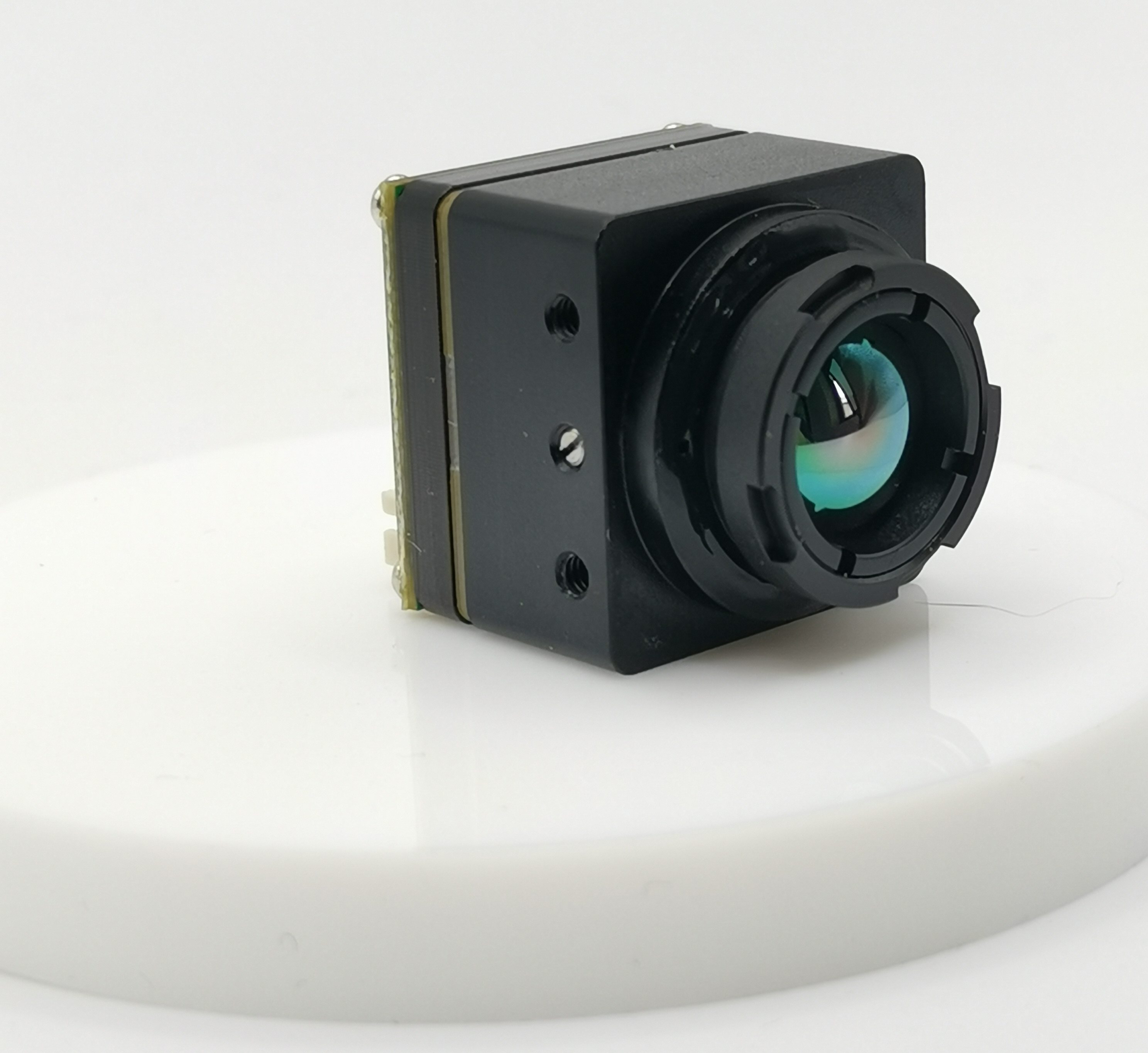How to Choose the Best FPV Thermal Camera for Drone Surveillance and Imaging

Understanding FPV Thermal Cameras for Drone Surveillance
When it comes to drone surveillance, FPV thermal cameras play a crucial role in providing real-time visual data. Let's delve into the basics of FPV and thermal imaging to understand their significance in the realm of drone technology.
The Basics of FPV and Thermal Imaging
What is FPV?
FPV, or First Person View, refers to the technology that allows drone operators to view live video feeds from the drone's perspective. This immersive experience enables precise control and navigation, especially in challenging environments.
How Thermal Imaging Works
Thermal imaging involves capturing the heat emitted by objects and creating a visual representation based on temperature variations. This technology is invaluable for detecting living beings, identifying hotspots, and navigating through low-visibility conditions.
Why Use FPV Thermal Cameras for Surveillance?
Benefits for Search and Rescue Operations
In search and rescue (SAR) missions, FPV thermal cameras are indispensable tools for locating individuals in remote or hazardous areas. By detecting body heat signatures, these cameras aid in swift and effective rescue operations, potentially saving lives.
Enhancing Security and Surveillance
For security purposes, FPV thermal cameras provide an added layer of vigilance by detecting intruders or monitoring large areas with minimal human intervention. Their ability to capture thermal signatures ensures comprehensive surveillance even during nighttime or adverse weather conditions.
Key Features to Look for in the Best Drone Thermal Camera
When selecting the best drone thermal camera for surveillance and imaging, several key features should be considered to ensure optimal performance and functionality.
Resolution and Image Quality
The resolution of a thermal camera is a critical factor in determining the clarity and detail of captured images. High resolution enables precise detection of heat signatures, making it easier to identify objects and individuals from a distance. When evaluating image quality, it's essential to consider factors such as color palettes, contrast, and the ability to distinguish temperature variations accurately.
Range and Sensitivity
Thermal sensitivity plays a vital role in detecting subtle temperature variations, especially in challenging environmental conditions. Understanding the thermal sensitivity of a camera allows operators to gauge its effectiveness in capturing thermal data with precision. Additionally, assessing the effective range of a thermal camera is crucial for determining its capability to detect heat signatures over long distances.
Compatibility and Ease of Use
Ensuring that a thermal camera is compatible with your specific drone model is essential for seamless integration and optimal performance. Compatibility with your drone guarantees that the camera can be easily mounted and operated without compatibility issues. Moreover, user-friendly features such as intuitive controls, customizable settings, and streamlined calibration processes contribute to an enhanced overall experience when using the thermal camera for surveillance purposes.
Top Picks for FPV Thermal Cameras
Now that we understand the essential features to look for in a FPV thermal camera for drone surveillance, let's explore some top picks that offer exceptional performance and functionality.
DJI Matrice 30T: A Versatile Performer
Key Features
High-resolution thermal imaging capabilities, providing detailed heat signatures even from a distance.
Advanced thermal sensitivity for precise detection of temperature differentials in various environmental conditions.
Seamless compatibility with a wide range of drones, ensuring flexibility and ease of integration.
Intuitive user interface and customizable settings for enhanced operational control and efficiency.
Pros
Exceptional image quality and clarity, enabling accurate identification of heat sources.
Versatile compatibility with multiple drone models, offering flexibility in surveillance operations.
User-friendly interface and controls, making it accessible for both beginners and experienced operators.
Cons
Higher price point compared to other options on the market.
May require additional accessories for optimal performance in certain scenarios.
iSUN Analog FPV Thermal Camera: The Budget-Friendly Choice
Key Features
Affordable yet reliable thermal imaging solution for drone surveillance applications.
Compact and lightweight design, ideal for smaller drones without compromising performance.
Decent thermal sensitivity and effective range, suitable for basic surveillance needs at a budget-friendly cost.
Straightforward installation process with minimal setup requirements.
Pros
Cost-effective option without sacrificing essential thermal imaging capabilities.
Lightweight build ensures minimal impact on drone maneuverability during flight operations.
Easy installation and setup, making it accessible to drone operators with varying levels of experience.
Cons
Limited advanced features compared to higher-end models in the market.
Reduced resolution may affect the level of detail in captured thermal images.
Autel EVO MAX 4T Bundle: For the Professionals
Key Features
Cutting-edge thermal imaging technology with exceptional resolution and sensitivity for professional-grade surveillance tasks.
Extended effective range, allowing comprehensive coverage of large areas during surveillance missions.
Enhanced compatibility with high-performance drones, delivering seamless integration and optimized functionality.
Robust construction designed to withstand challenging environmental conditions while maintaining consistent performance.
Pros
Superior image resolution and thermal sensitivity, catering to the demands of professional surveillance applications.
Long-range capabilities enable efficient monitoring of expansive areas without compromising data accuracy.
Durable build quality ensures reliability in diverse operational environments.
Cons
Considerably higher investment required due to its advanced features and professional-grade specifications.
Complex operational interface may necessitate training or familiarization for new users.
Making the Right Choice: Tips and Considerations
When selecting an FPV thermal camera for drone surveillance, several essential tips and considerations can guide you in making an informed decision that aligns with your specific needs and budget.
Assessing Your Needs and Budget
Identifying Your Surveillance Goals
Before investing in an FPV thermal camera, it's crucial to identify your specific surveillance goals. Determine the primary use cases for the camera, whether it's search and rescue missions, security monitoring, or environmental inspections. Understanding the intended applications will help narrow down the features and capabilities required for optimal performance.
Additionally, consider the environmental conditions in which the camera will be utilized. If surveillance operations often take place in challenging terrains or adverse weather conditions, prioritizing ruggedness and durability becomes paramount.
Balancing Cost and Performance
While evaluating different FPV thermal cameras, striking a balance between cost and performance is essential. Assess the features offered by various models in relation to their pricing to determine the best value for your investment. Keep in mind that higher-priced options may offer advanced functionalities suited for professional applications, while budget-friendly alternatives may fulfill basic surveillance needs effectively.
Consider long-term benefits when weighing the initial cost against performance capabilities. Investing in a reliable thermal camera with robust features can lead to enhanced operational efficiency and accurate data acquisition over time.
Testing and Reviews
The Importance of Hands-on Testing
Engaging in hands-on testing of FPV thermal cameras provides invaluable insights into their real-world performance. Whenever possible, seek opportunities to test different models under varying environmental conditions relevant to your surveillance requirements. This firsthand experience allows you to assess factors such as image clarity, ease of operation, and compatibility with your existing drone setup.
Furthermore, hands-on testing enables you to evaluate how well each camera aligns with your surveillance goals. Pay attention to aspects such as thermal sensitivity, effective range, and user interface intuitiveness during testing to make an informed decision.
Finding Reliable Reviews
In addition to personal testing, leveraging reliable reviews from industry experts and experienced users can supplement your decision-making process. Look for comprehensive reviews that delve into technical specifications, real-world performance assessments, and practical usability insights.
Seek out reputable sources such as professional drone operators, industry publications, and online forums dedicated to aerial imaging technologies. Analyzing a diverse range of perspectives can provide a well-rounded understanding of each FPV thermal camera's strengths and limitations.
By combining firsthand testing with thorough review analysis, you can gain confidence in selecting an FPV thermal camera that meets your specific surveillance needs while staying within your budget constraints.
Final Thoughts
Embracing the Future of Drone Surveillance
As we continue to witness advancements in drone technology, the role of thermal imaging in surveillance operations is poised for substantial growth. The integration of FPV thermal cameras with drones has revolutionized the way we gather visual data, especially in scenarios where traditional methods fall short.
Thermal imaging's ability to detect heat signatures and temperature differentials offers unparalleled advantages in search and rescue missions, security monitoring, and environmental assessments. By embracing this technology, drone operators can enhance their capabilities to safeguard lives, secure critical infrastructure, and conduct efficient aerial inspections.
The Growing Role of Thermal Imaging
The growing reliance on thermal imaging for drone surveillance underscores its pivotal role in addressing complex challenges across various industries. From identifying missing persons in remote areas to detecting anomalies in industrial facilities, thermal cameras equipped with FPV capabilities have become indispensable tools for comprehensive data acquisition.
Moreover, as regulatory frameworks evolve to accommodate the integration of drones into diverse operational domains, the demand for reliable and high-performance FPV thermal cameras is expected to rise significantly. This trend emphasizes the increasing recognition of thermal imaging as a fundamental component of modern surveillance strategies.
Staying Informed on New Technologies
Remaining informed about emerging technologies and innovations within the realm of FPV thermal cameras is essential for staying ahead in the dynamic landscape of drone surveillance. As new features and functionalities are introduced, keeping abreast of these developments empowers drone operators to make informed decisions when upgrading or expanding their aerial imaging capabilities.
Furthermore, ongoing advancements in thermal sensor technologies and image processing algorithms present opportunities for enhanced precision and efficiency in capturing thermal data from aerial perspectives. By actively engaging with industry insights and technological updates, professionals can leverage these advancements to elevate their surveillance practices while adapting to evolving operational requirements.
In conclusion, embracing the future of drone surveillance entails recognizing the pivotal role of FPV thermal cameras and staying attuned to technological progress. By harnessing the power of thermal imaging alongside drones, we pave the way for more effective, responsive, and sustainable approaches to aerial surveillance across diverse applications.
See Also
Selecting the Top FPV Thermal Camera for Your DJI Drone
Picking the Finest Analog FPV Thermal Camera for Your DJI Drone
The Definitive Manual for Selecting the Top Drone with Thermal Imaging Camera
Optimizing Drone Monitoring with Analog FPV Thermal Camera: A Thorough Handbook
Analog FPV Thermal Camera versus Drone with Thermal Imaging Camera: An In-Depth Contrast
Contact Us: Ms. Coco Huang
E-mail: sales@iasun.cn
WhatsApp/Wechat: +86 13510421923

